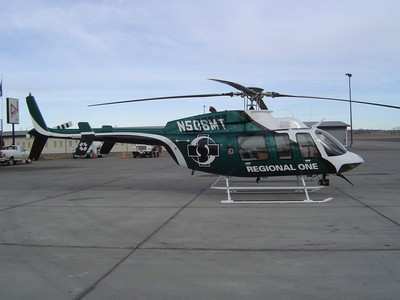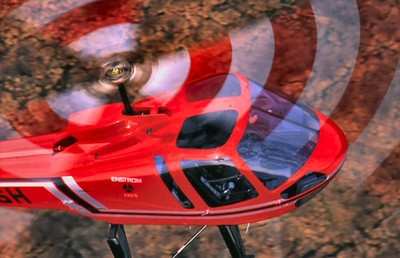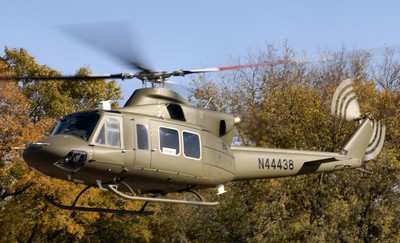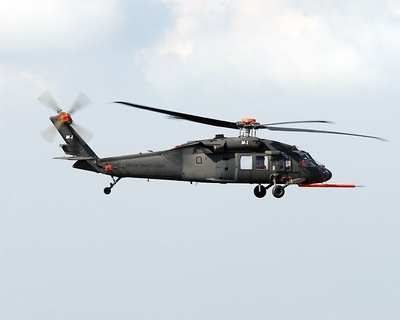 Rolls-Royce has released its annual
ten-year forecast of worldwide turbine helicopter deliveries. The
forecast projects worldwide deliveries of turbine-powered
helicopters and rotary-wing unmanned air vehicles (UAVs) in all
size classes, both civil and military, from 2006 until the end of
year 2015.
Rolls-Royce has released its annual
ten-year forecast of worldwide turbine helicopter deliveries. The
forecast projects worldwide deliveries of turbine-powered
helicopters and rotary-wing unmanned air vehicles (UAVs) in all
size classes, both civil and military, from 2006 until the end of
year 2015.
For the fifth year running, Rolls-Royce has teamed-up with
industry forecasting specialist the Teal Group to provide the
definitive turbine helicopter market forecast. This partnership
allows the companies to pool their respective analytical tools,
industry insight and forecasting databases, thereby creating the
most accurate survey available.
OVERALL SUMMARY
During the 2006-2015 period, some 10,915 turbine rotorcraft
deliveries are forecast worldwide (with an associated airframe
value of $95.0 billion and an installed engine value of $8.9
billion). This figure reaffirms last year’s forecast, with
substantial military fleet replenishment taking place while the
civil forecast remains stable.

Although several military rotorcraft programs continue to
experience funding- and development-related delays, the number and
severity of these postponements appears to have tailed-off compared
to previous years. This is due to a combination of factors,
including the onset of several programs into production, and a
degree of balance having now been achieved between the immediate
operational funding requirements in support of the ‘War On
Terror’ and the longer-term re-equipment needs of the
world’s armed forces. While it is possible that some nations
may consider refocusing procurement funds towards upgrades rather
than new-buy efforts as a short-term funding solution, the
well-known risks associated with major rebuilds can be expected to
limit the extent of this reprioritization.
On a unit basis, the split between civil and military sales is
again forecast to be 48:52, with the split by aircraft value being
15:85, or 22:78 by engine value. In addition to underscoring the
relatively larger size (and hence cost) of most military
rotorcraft, this value split does of course also reflect the higher
cost of mission avionics, etc., fitted to military rotorcraft.
CIVIL SUMMARY
Civil helicopter deliveries are projected to total 5,191 units
during the next ten years, one percent higher than last
year’s forecast. The associated value of this market is
forecast to be $13.9 billion in airframes and $1.9 billion in
installed engines. This stability reflects the long-term health of
the civil helicopter market, with anticipated new product
introduction towards the end of the decade bolstered by strong
near-term demand from offshore operators and law enforcement
agencies.

Turbine singles (57 percent of deliveries) and light twins (22
percent) will dominate the market, with the intermediate class of
aircraft forecast to capture 18 percent. Deliveries are expected to
remain above 500 units annually through to the end of the period.
These figures exclude civil helicopter types utilized in military
and armed paramilitary roles, such as basic training and coast
guard duties, with these applications instead being included in the
military forecast.
MILITARY SUMMARY
Our forecast projects a total of 5,724 military helicopter
deliveries and major engine-related upgrades during 2006-2015. The
associated value of this market is forecast to be $81.1 billion in
airframes and $7.0 billion in installed engines.

The military rotorcraft market is expected to benefit from
substantial re-equipment over the period, across all segments.
Approximately 44 percent of all unit deliveries will be
multi-engine medium rotorcraft, primarily troop transports and
maritime patrol aircraft, with 19 percent being intermediate twins
(e.g. light attack and tactical utility helicopters) and 18 percent
being turbine singles (e.g. armed reconnaissance helicopters and
vertical take-off and landing UAVs or VTUAVs).

Shipments of military rotorcraft are forecast to rise
substantially over the next four years, before leveling-off for the
remainder of the period. Although the predicted re-equipment phase
will include a number of major engine-related upgrade programs, the
volume of these retrofits has reduced substantially compared to
prior estimates, due to doubts over the cost-benefit of this
approach. Major aircraft rebuild programs hold the risk of
unexpected corrosion being uncovered, and as a result offer only
minor cost savings when compared to new aircraft production. The
United States Department of Defense has already decided to pursue
new aircraft production rather than remanufacture for a number of
important programs (e.g. CH-53K, MH-60R, UH-60M, and UH-1Y), with
the AH-1Z and CH-47F/MH-47G programs also now incorporating a
degree of new-build aircraft production.
 Classic Aero-TV: The Switchblade Flying Car FLIES!
Classic Aero-TV: The Switchblade Flying Car FLIES! ANN FAQ: Q&A 101
ANN FAQ: Q&A 101 ANN's Daily Aero-Term (04.12.24): Discrete Code
ANN's Daily Aero-Term (04.12.24): Discrete Code ANN's Daily Aero-Term (04.13.24): Beyond Visual Line Of Sight (BVLOS)
ANN's Daily Aero-Term (04.13.24): Beyond Visual Line Of Sight (BVLOS) ANN's Daily Aero-Linx (04.13.24)
ANN's Daily Aero-Linx (04.13.24)







